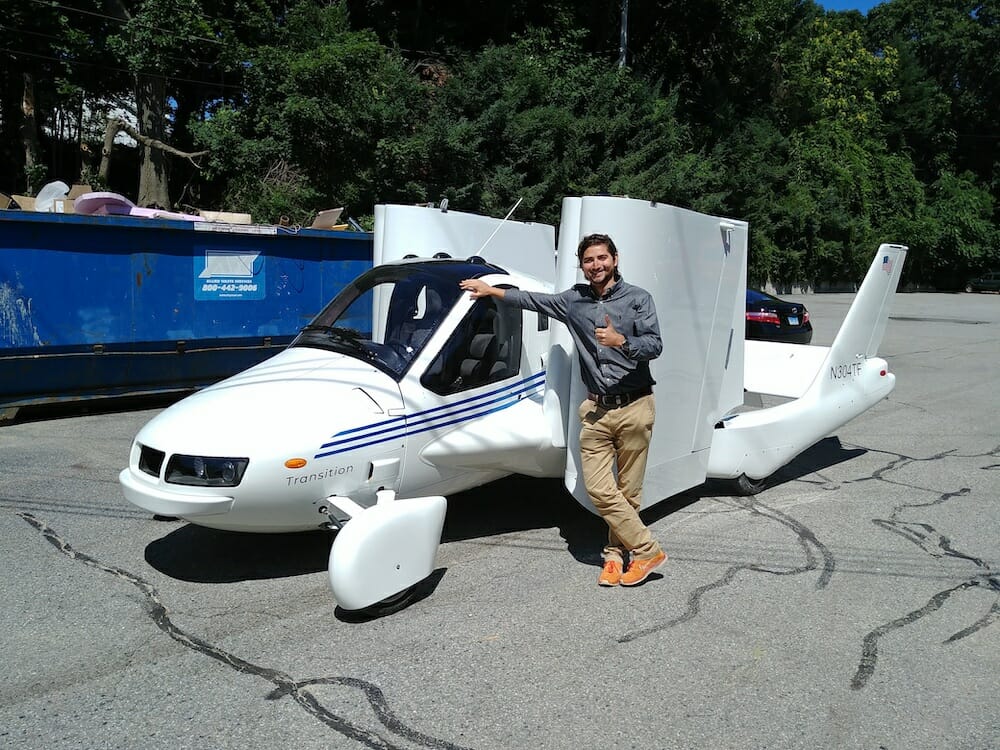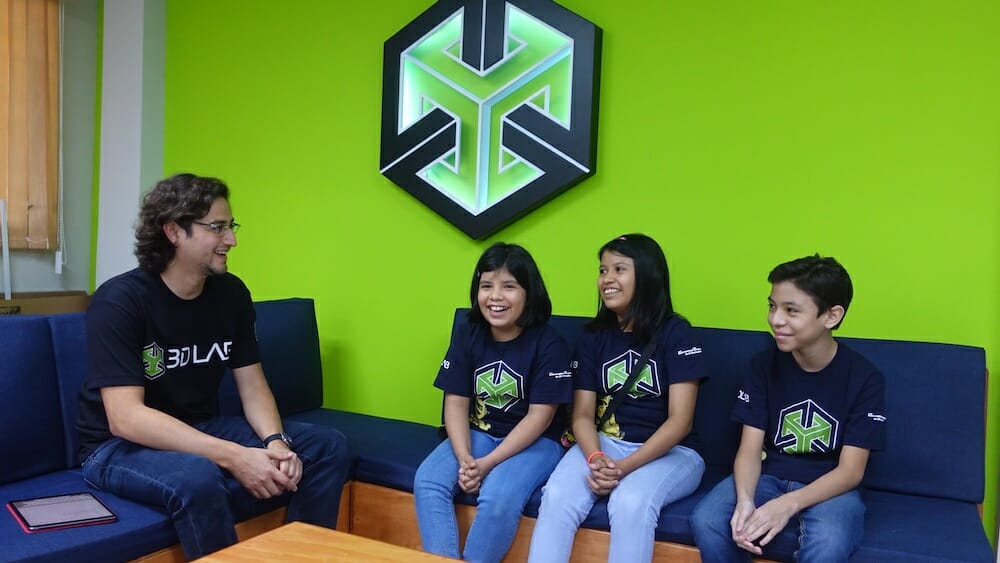Bringing the Maker Movement Home
Nestor Castaneda starts 3D Lab in El Salvador
Nestor Castaneda is an engineer, designer, entrepreneur, and mentor whose work includes materials research at Drexel University and composite engineering at flying car manufacturer Terrafugia.

Nestor’s mentors opened doors for his education and career. Becoming a mentor himself, Nestor guides the next generation of makers and designers in El Salvador
Interviewed by Eva Hill, photos courtesy of Nestor Castaneda
In a recent interview with CoDesign, Nestor told us about one of his newest projects: bringing the maker movement to his home country of El Salvador.
Eva Hill: Could you give a brief background on how you got into design and why you find it interesting?
Nestor Castaneda: My first step into design was through art. I guess I had that part of my brain that liked art, and I also had the part of my brain that liked math and science – like a left brain, right brain situation. Towards graduation, I leaned more towards math and science, so that’s how I got into engineering, and within engineering the aspect that I liked most was design, because you get to add value to a problem with your creativity and with the knowledge that you might have.
EH: What was your inspiration for creating the makerspace project, 3DLAB?
NC: Towards the last years of my college experience, I started thinking that I would like to go back home and have my own engineering company. If I go back home to El Salvador and I set up my engineering company, I don’t want to hire people from outside the country. I want to hire local people so we provide employment. As of now, El Salvador is not known as a technological hub. I want to change that.
I realized that I needed to invest in education. One way I could do it is through workshops – whenever I’m [in El Salvador] I could host my own courses – informal workshops, teaching how to 3D model and how to use digital fabrication tools and things like that. At the time there wasn’t really a place I could do this, so that’s the point at which I realized I needed to create a makerspace.
I have close connections with a university back home, Universidad Tecnológica de El Salvador (UTEC) – that is, Technological University of El Salvador. When I went to the university, I happened to come across a group of students who had also been thinking about something along those lines. We immediately clicked, and that was crucial to the logistics of all this because we made a good team. When you have a really good team, you can overcome the barriers of distance.
EH: Do you see further expansion of the space in the future?
NC: Definitely. Even though we are only offering prototyping as a service and workshops, my goal for next year is to create classes that are part of the syllabus so that students can formally take classes that have been designed by us, and then once we have those courses, the next step would be to integrate existing and new careers at the university.
One of the huge milestones is not only expanding the physical space, but becoming a Fab Lab too. Fab Labs have a set of requirements, and within the requirements are a set of tools that you have to have in your makerspace. The idea behind this is that no matter where you go, whether you’re in Brazil or France or El Salvador, you can make the same things because you’re going to have the same tools. You become a member of this international community, a network of all the makerspaces that are Fab Labs. So with that, we’re positioning ourselves and the country in the international maker world. We’re going to get the word out there that things are happening in El Salvador and that we are leading this maker movement back home.
EH: What changes have you seen in the past decade or so in the way that art and design are valued in both El Salvador and the United States?
NC: [In the United States], art and design are definitely valued more now, and you know that because about 10 years ago, when you heard about education, the hot topic then was STEM education, but nowadays you’re hearing STEAM, and the “A” stands for “arts.” So the fact that we are thinking more about adding arts as a core education – I think that says a lot. And it doesn’t surprise me that we are valuing arts and design more, because with the technological progress that we’re seeing, things are just happening so fast that we have to figure out ways to preserve what makes us human, like the arts. I think something that technology will never replace is human creativity.
It’s not as drastic, but in El Salvador you are also hearing about STEAM education. There are STEAM labs, for example. However, because our technology isn’t hardcore, art has always been close to us, and I think we never lost its value. What I am seeing is more young people getting into design and the arts, and that’s because older generations are providing opportunities through workshops and fairs and things like that to promote design. So that’s exciting to see as well.

EH: Would you say that there’s an artistic component to the makerspace as well as the engineering aspects?
NC: Definitely. I don’t want the makerspace to become just an engineering lab – in fact, when I describe the makerspace, I describe it as a design laboratory. Art has a lot to do with it, because sometimes the coolest projects are not constrained by mathematical equations. I would like the involvement of the arts [there] to be more intentional. Towards this, we are working on a “maker-in-residence” program. I can see any person that’s a maker, whether their background is in industrial design or engineering or arts, coming to the lab and finding interesting ways in which they can use the fabrication tools to create stuff.
EH: Are there any other projects that you’re planning on in the future?
NC: The thing about El Salvador is that there is so much opportunity that can be hard to see. What I mean by that is that you do not see high-rises and technological factories. That’s my main drive with everything that I’m doing, to elevate the technological capacity of the country. Towards it, there are so many things that I would like to do. The first step was the makerspace. I think the next project that I’ll be working on in parallel is my own company, but not fully-fledged. For example, my dream would be to make – to fabricate in the country – an electric bike, or something like that. Something that involves software, hardware, design, but everything manufactured within the country. That’s what I would like to start working on in 10 years, when I get there, when I can live there and dedicate my full time to that.

Read more about Nestor’s story in We Design: People. Practice. Progress. on view at our Boston and Portland branches. Find the exhibition near you!
